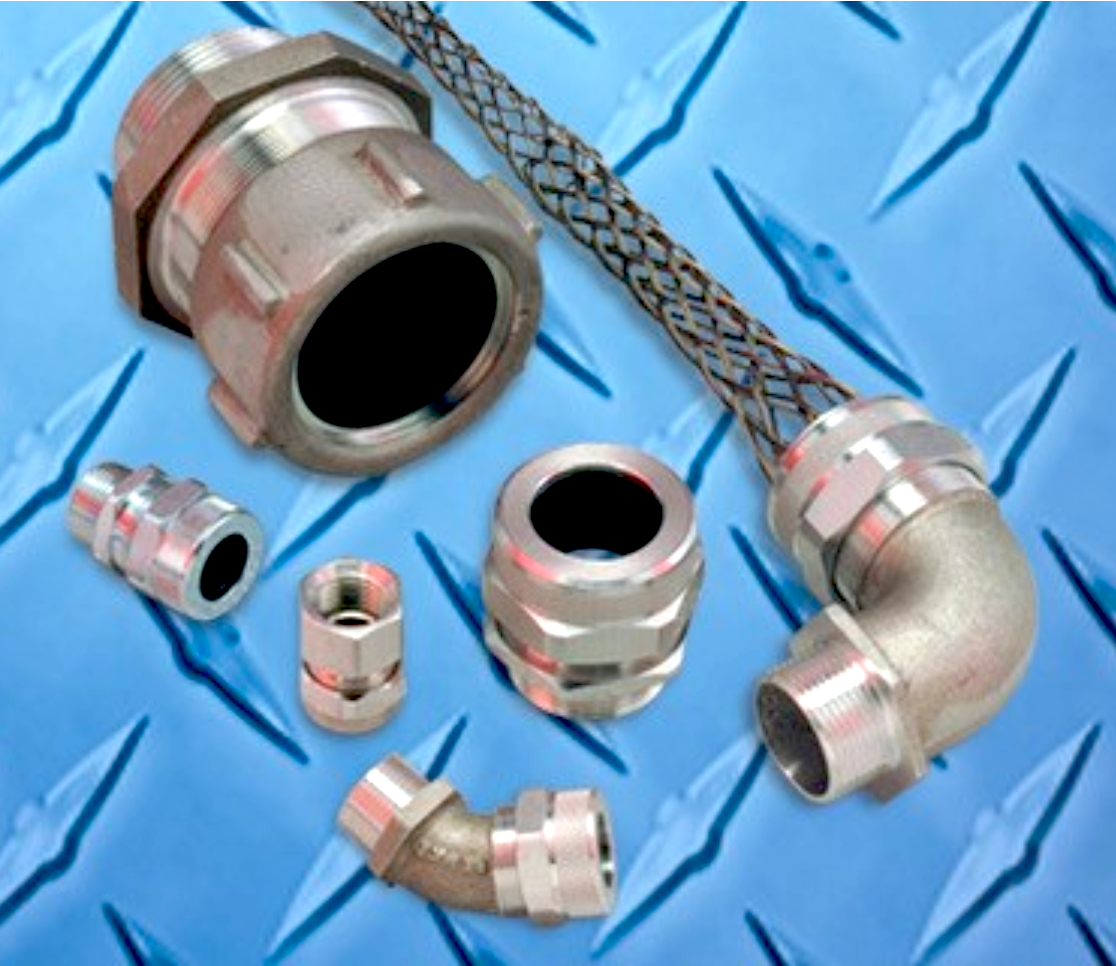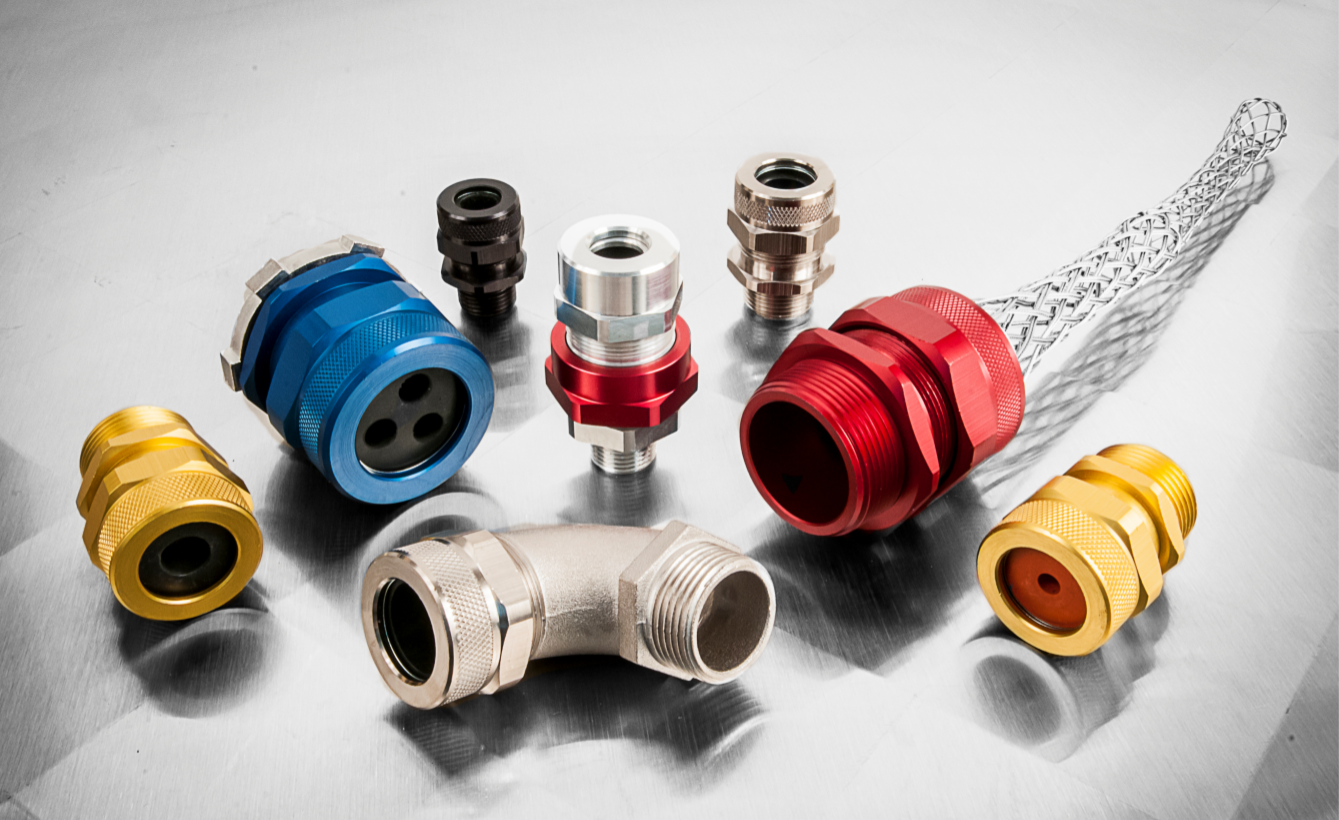Five Things to Consider When Specifying Custom Cord Grips
Customized cord grips meet unique application challenges and provide additional benefits including easier installation, reduced maintenance, and higher reliability.
Cord grips provide the means for passing cord or cable into an enclosure, through a bulkhead, or into a control device like a switch. These grips prevent cable pull-out or premature fatigue because they secure the cable where it enters the enclosure or where it’s terminated into a hardwired application. First used during World War II, cord grip applications have evolved from strictly dry to both dry and wet locations as more and more industrial facilities required products capable of withstanding increasingly harsh environments with conditions ranging from challenging space limitations to contact with corrosive chemicals.
Just as electrical connectors have evolved to meet customer needs that extend far beyond what standard products could accommodate, cord grips have become more customizable as well, resulting in countless options, add-ons, and material combinations that make achieving a successful solution for any application possible. Now, the right cord grip — when customized to your exact specifications — can help prevent failure and increase connection reliability no matter what environment you’re working in.

Remke’s industrial-strength RSR Strain Relief Cord Grips prevent cable pull-out, control arc of bend, and provide rugged environmental protection in harsh-environment indoor and outdoor applications.
Customized cord grips can be modified a lot or a little, depending on your specific connector needs. Some changes are relatively simple, like modifying a stock product with minor alternations, while others, like adapting materials, threading, plating, or anodizing, or adding custom markings or labeling, are more involved. Experienced cord grip manufacturers can also engineer fully-custom solutions built to satisfy each and every one of your application specifications. The sky really is the limit!
Don’t settle for standard grips when there are so many options for customization. Consider these five aspects of custom cord grip selections and then reach out to your preferred supplier to achieve an optimal solution.
1. Material Selection
Th choice of cord grip materials is typically application driven, as it’s dependent upon environment and use. The six materials most commonly used materials are:
- Die-Cast Zinc, which is good for light-duty environments, including residential and commercial applications
- Aluminum, which offers excellent machinability, durability, and performance and, as a result, is the most common cord grip material
- Nylon, which provides excellent corrosion resistance and is lightweight, yet durable
- Steel, which offers better tensile strength than aluminum for added durability in demanding applications
- Valox, which provides superior corrosion resistance, is suitable for use in FDA washdown environments
- Stainless Steel, which offers exceptional tensile strength and provides the highest levels of durability in severely corrosive environments

Remke’s large-size (3–4”) cord grips are suitable for a wide range of harsh-environment applications. Standard offerings include multiple sizes of machined or cast aluminum grips with optional wire mesh, stainless steel grips with optional wire mesh, and jacketed MC cable connectors, single-hole neoprene bushings, multiple hole bushings, and silicone bushings, and virtually unlimited customization opportunities.
2. Wire Mesh
Adding wire mesh to a cord grip can support the weight of vertical or sloping cables by distributing stress over a large area. This distribution prevents excessive strain and cable pull-out, as well as damage to wire, cable, and flexible conduits.
Cord grips with mesh are built to perform over an extended period of time without loosening their hold. Wire mesh can be added to most standard metallic or non-metallic cord grips. A variety of wire mesh materials are available as well, including non-magnetic tin-coated bronze, stainless steel, galvanized steel, plastic-coated galvanized steel strands, non-metallic strands, and other custom configurations.
3. Custom Components and Cord Grip Add-Ons
Another part of the customization process is choosing from a variety of cord grip add-on options, including:
- Multiple Hole Bushings, which terminate several cables and conductors into a single cord grip with one simple fitting to reduce equipment, cost of labor, and space
- O-Rings, which seal out the elements in both indoor and outdoor applications
- Nickel-Plating, which improves corrosion- and wear-resistance and provides better lubricity without the expense of stainless steel
- Anodizing, which ruggedly resists corrosion and wear, prevents galling, and improves heat dissipation
- Locknuts, which can be added directly to the connectors rather than sourced separately
- Molded Rubber Cones, which protect cables and connectors from damage resulting from bending and flexing strain at connection points and helps prevent pull-out

Nickel-plated aluminum cord grips offer a lightweight, low-cost alternative to stainless steel, provide excellent corrosion and wear resistance, are rated for -40°F to +500°F, and are suitable for food processing equipment. Anodized aluminum cord grips offer another option for enhanced corrosion resistance.
4. Special Threading
Several different kinds of threading are available to create the perfect, reliable seal for any cord grip. These include:
- NPT, or National Pipe Tapered threads, an American standard for tapered threads on threaded pipes and fittings that, unlike straight threads, are designed to pull tight for a closer seal1
- Pg, which is an abbreviated form of panzergewinde — a technical thread standard that was established in Germany and is used to join pieces of electrical conduit and cable glands
- ISO Metric, the most common type of general-purpose screw thread used worldwide
- NPS, or National Pipe Straight threads, which have the same thread angle, shape, and pitch as NPT threads, but are straight rather than tapered2
Many manufacturers also accept application-specific requests and can develop cord grip threading that matches a customer’s environmental needs.
5. Custom Packaging and Kitting
Cord grip manufacturers can create kits (or special bulk packaging) that contain all the connectors and components required to meet a customer’s exact specifications. Custom kits can combine multiple connector sizes, different bushings, and more in a single package to keep things quick and convenient. They can also be branded with a logo or other markings for easy identification and organization.
Today’s cord grips offer an incredible range of customization options and experienced cord grip manufacturers can provide custom solutions tailored to meet your exact application needs, whether simple or complex. To learn more about technical and custom application support, contact a Remke Engineered Solutions representative.
Visit Remke Industries online.
References
- https://www.wireandcabletips.com/what-are-cord-grips/
- https://www.usplastic.com/knowledgebase/article.aspx?contentkey=998
Like this article? Check out our other Connector Basics and Harsh Environment articles, our Wire & Cable Assemblies Market Page, and our 2019 Article Archive.
- Five Things to Consider When Specifying Custom Cord Grips - December 10, 2019





